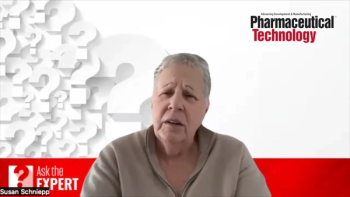
- BioPharm International-12-01-2018
- Volume 31
- Issue 12
Bringing Quality into the Forefront
Innovation may capture headlines, but quality programs are the foundation to biopharma success.
The end of the year is the traditional time to assess achievements and shortfalls of the past 12 months. A preliminary review of the bio/pharma industry accomplishments shows some impressive results. By the end of November 2018, FDA had approved 53 novel drugs, setting a pace for the most approvals on record.
The approvals included notable advances in science and targeted medicine. On November 26, FDA approved Vitrakvi (iarotrectinib), the second cancer treatment approved based on a biomarker for different types of tumors rather than tumors originating in a specific organ or part of the body. The therapy is the first to receive a tumor-agnostic indication at the time of initial FDA approval (1).
In announcing the approval, FDA Commissioner Scott Gottlieb noted that the therapy marked “a new paradigm in the development of cancer drugs that are ‘tissue agnostic.’” Gottlieb also credited increased knowledge of cancer mutations, breakthrough therapy designation and accelerated approval processes, and a modern framework of clinical trial designs as contributing to more targeted and effective cancer treatments.
Uncovering quality issues
While the approvals marked progress in innovation, the global recall of the API valsartan due to the discovery of impurities N-nitrosodimethylamine (NDMA) and N-nitrosodiethylamine (NDEA) in drug products raised questions about the quality of drug substances in the supply chain.
Quality problems were a mixed bag this year. The number of warning letters issued by FDA were on a slightly slower pace compared with 2017; however, the number of drug recalls were up.
While innovative achievements such as new drug approvals get the headlines and are recognized and rewarded, quality programs are essential but rarely get attention until something goes wrong. In this issue, and in supplemental online coverage, the editors present multiple views of quality issues, throughout the drug development and manufacturing continuum.
In this issue
Validating supplier quality: consultants and experts in risk assessment share best practices that will help ensure the quality of APIs, ingredients, and process aids and materials.
Lot release testing: Recommended testing-bioburden testing, mycoplasma testing, in-vitro viral screening, and virus-specific qPCR-for unprocessed bulk material collected from a bioreactor is described.
Fluorescence standards: As fluorescence measurements of cell structures, proteins, and DNA are becoming more and more quantitative, standards are needed to ensure accuracy and reproducibility.
Online quality resources
The editors have added new features on mock inspections, risk assessment and mitigation, standard operating procedures, technology transfer, regulatory authority actions, and other quality-related practices to the BioPharm International website. Bookmark
Reference
1. FDA, “FDA Approves an Oncology Drug That Targets a Key Genetic Driver of Cancer, Rather Than a Specific Type of Tumor,” Press Release, Nov. 26, 2018.
Article Details
BioPharm International
Vol. 31, No. 12
December 2018
Page: 5
Citation
When referring to this article, please cite it as R. Peters, “Bringing Quality into the Forefront," BioPharm International 31 (12) 2018.
Articles in this issue
about 7 years ago
Unprocessed Bulk Testing for Biopharmaceuticalsabout 7 years ago
Investigation Timeliness vs. Thoroughness: Finding the Right Balanceabout 7 years ago
Overcoming Challenges in ADC Bioconjugation at Commercial Scaleabout 7 years ago
Contract Organizations Expanded in Autumnabout 7 years ago
Going Beyond the Surface to Ensure Supplier Qualityabout 7 years ago
BioPharm International, December 2018 Issue (PDF)about 7 years ago
NIST Fluorescence-Based Measurement Servicesabout 7 years ago
Achieving Process Balance with Perfusion Bioreactorsabout 7 years ago
Quality Manufacturing Key to Reducing Drug ShortagesNewsletter
Stay at the forefront of biopharmaceutical innovation—subscribe to BioPharm International for expert insights on drug development, manufacturing, compliance, and more.




